A non-uniform bar of weight W is suspended at rest by two strings of negligible weight as shown in figure. The angles made by the strings with the vertical are 36.9∘and53.1∘ respectively. The bar is 2 m long. Calculate the distance d of the centre of gravity of the bar from its left end.
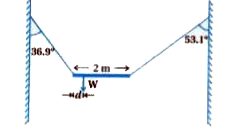 Solution in Gujrati
Solution in Gujrati
Suppose bar AB is suspended at rest by two strings OA and O.B of negligible weight. The angles made by the strings with the vertical are 36.9∘and53.1∘ respectively.
∠OAA.=53.1∘and∠O.BB=36.9∘
AB=2m and suppose distance of centre of mass from end A is d.
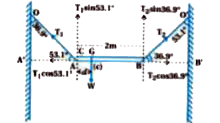
T1andT2 are the tensions produced in the left and right strings respectively and their mutual components are shown as in figure.
At translational equilibrium,
−T1cos53.1∘=−T2cos36.9∘
∴T1cos53.1∘=T2cos36.9∘and....(1)
T1sin53.1∘+T2cos36.9∘=W....(2)
Sum of torque at point A
∴−T2sin36.9∘×AB+W.d=0
∴−T2sin36.9∘×2+W.d=0
∴T2=Wd2sin36.9∘....(3)
From eqn. (2) and (3)
T1sin53.1∘=W−T2sin36.9∘
=W−Wdsin36.9∘2sin36.9∘
=W−Wd2
∴T1=W(1−d2)sin53.1∘....(4)
From eqn. (1)
T1cos53.1∘=T2cos36.9∘
Putting the value of eqn. (2) and (3)
W(1−d2)cos53.1∘sin53.1∘=Wdcos36.9∘2sin36.9∘
∴1−d2tan53.1∘=d2tan36.9∘
∴1−d21.3319=d2×0.7508
∴1−d2=d×1.33191.5016
∴1=0.5d+0.887d
∴1=1.387d
∴d=11.387=0.72098
∴d≈0.721m
∴d≈72.1cm
Topper's Solved these Questions
- SYSTEMS OF PARTICLES AND ROTATIONAL MOTIONBOOK - KUMAR PRAKASHANCHAPTER - SYSTEMS OF PARTICLES AND ROTATIONAL MOTIONEXERCISE - SECTION-B ADDITIONAL EXERCISE
12 Videos
- SYSTEMS OF PARTICLES AND ROTATIONAL MOTIONBOOK - KUMAR PRAKASHANCHAPTER - SYSTEMS OF PARTICLES AND ROTATIONAL MOTIONEXERCISE - SECTION-B NUMERICAL FROM .DARPAN. BASED ON TEXTBOOK
17 Videos
- SYSTEMS OF PARTICLES AND ROTATIONAL MOTIONBOOK - KUMAR PRAKASHANCHAPTER - SYSTEMS OF PARTICLES AND ROTATIONAL MOTIONEXERCISE - SECTION-B NUMERICALS
29 Videos
- QUESTIONS ASKED IN JEE - 2020 BOOK - KUMAR PRAKASHANCHAPTER - QUESTIONS ASKED IN JEE - 2020 EXERCISE - Question
16 Videos
- THERMAL PROPERTIES OF MATTERBOOK - KUMAR PRAKASHANCHAPTER - THERMAL PROPERTIES OF MATTEREXERCISE - Question Paper (Section - D) (Answer following in brief :) Each carry 4 marks
1 Videos
Similar Questions
The longest wavelength in Balmer series of hydrogen spectrum will be
View SolutionThe particles of mass m1,m2andm3 are placed on the vertices of an equilateral triangle of sides .a.. Find the centre of mass of this system with respect to the position of particle of mass m1.

View SolutionFind the centre of mass of three particles at the vertices of an equilateral triangle. The masses of the particles are 100g, 150g, and 200g respectively. Each side of the equilateral triangle is 0.5m long.
View SolutionA non-isotropic solid metal cube has coefficient of linear expansion as 5×10−5/∘C along the x-axis and 5×10−6/∘C along y-axis and z-axis. If the coefficient of volumetric expansion of the solid is n×10−6/∘C then the value of n is....
View SolutionIn an experiment on the specific heat of a metal, a 0.20 kg block of the metal at 150∘C is dropped in a copper calorimeter (of water equivalent 0.025 kg) containing 150 cm3 of water at 27∘C. The final temperature is 40∘C. Compute the specific heat of the metal. If heat losses to the surroundings are not negligible, is your answer greater or smaller than the actual value for specific heat of the metal ?
View SolutionA thin uniform bar of mass m and length 2L is held at an angle 30^@ with the horizontal by means of two vertical inextensible strings, at each end as shown in figure. If the string at the right end breaks, leaving the bar to swing, determine the tension in the string at the left end and the angular acceleration of the bar immediately after string breaks.
View SolutionA non-uniform bar of weight W and weight L is suspended by two strings of neigligible weight as shown in figure. The angles made by the strings with the vertical are theta_1 and theta_2 respectively. The distance d of the centre of gravity of the bar from left end is. .
View SolutionA non-uniform bar of weight W is suspended at rest by two strings of negligible weight as shown in Fig. The angles made by the strings with the vertical are 36.9^(@) and 53.1^(@) respectively. The bar is 2m long. Calculate the distance d of the centre of gravity of the bar from its left end.
View SolutionA non-uniform bar of weight w is suspended at rest by two strings of negligible weight as shown in figure. The angles made by the strings with the vertical are 37∘ and 53∘ respectively. The bar is 2m long. Calculate the distance d of the centre of gravity of the bar from its left end. given sin37∘=3/5 and sin53∘=4/5
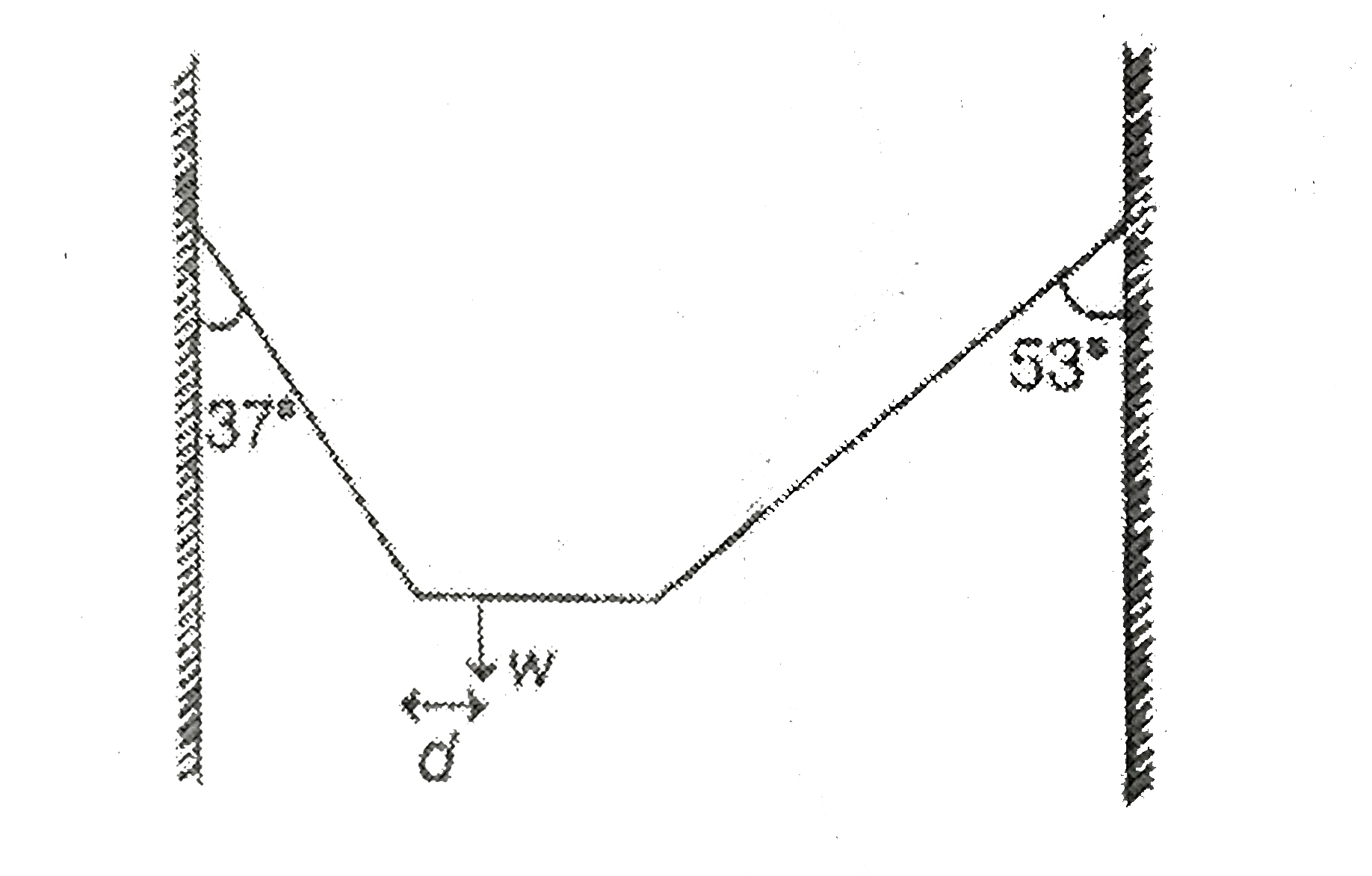
View SolutionW भार की एक असमांग छड़ को , उपेक्षणिय भार वाली दो डोरियों से चित्र 7.39 में दर्शये अनुसार लटका कर विरामावस्था में रखा गया है । डोरियों द्वारा ऊर्ध्वाधर से बने कोण क्रमशः 36.9∘ एवं 53.1∘ है छड़ 2m लम्बाई की है छड़ के बाएँ सिरे से इसके गुरुत्व केंद्र की दूरी d ज्ञात कीजिए
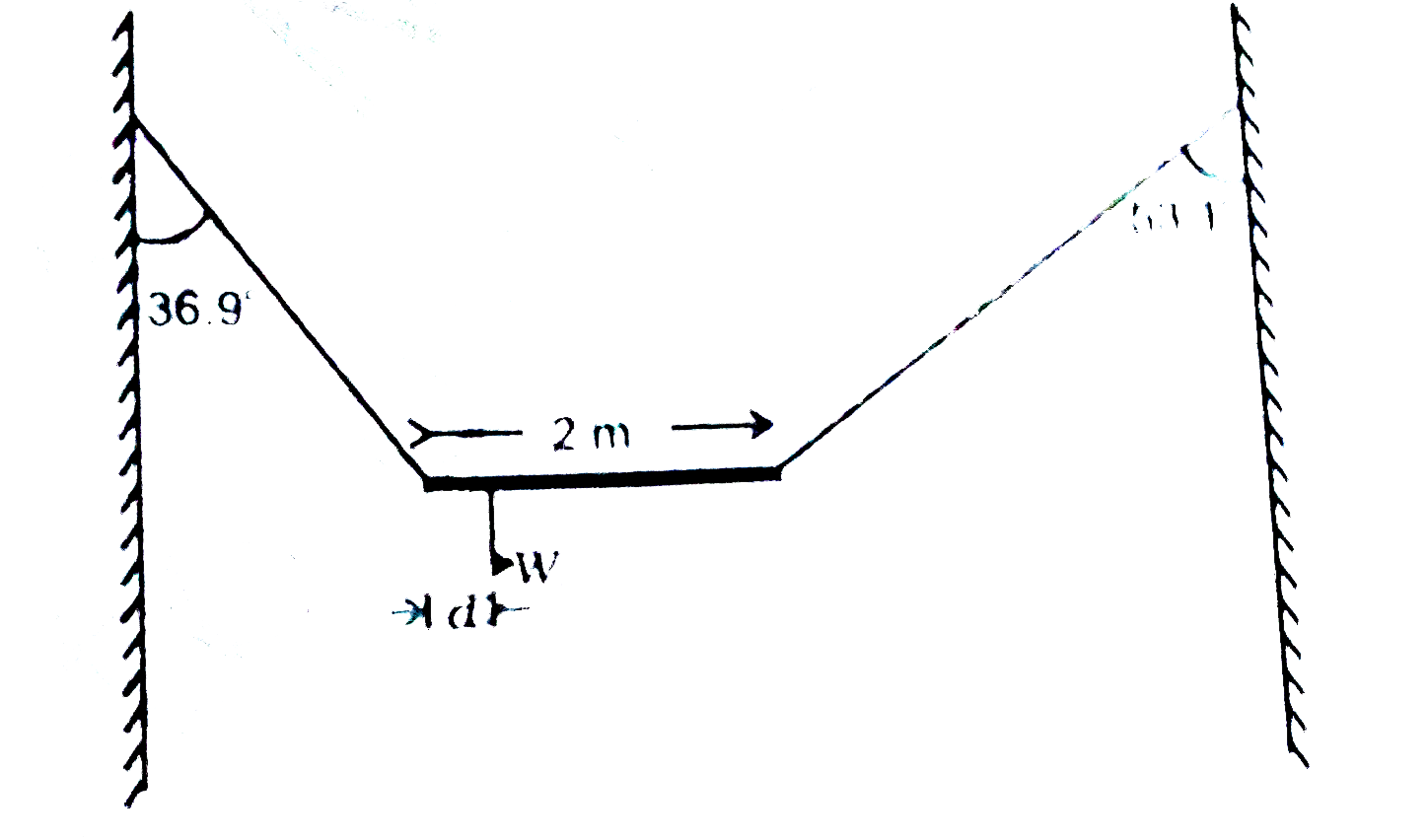
View SolutionA non-uniform bar of weight 'w' is suspended at rest by two strings of negligible weight. The angles made by the strings with the vertical are 36.9^(@) and 53.1^(@)C respectively. The bar is 2m long. Calculate the distance 'd' of the centre of gravity of the bar from its left. (refer fig).-NCERT
View SolutionW भार की एक असमांग छड़ को, उपेक्षणीय भार वाली दो डोरियों से चित्र में दर्शाये अनुसार लटका कर विरामावस्था में रखा गया है । डोरियों द्वारा ऊर्ध्वाधर से बने कोण क्रमश: 36.9∘ एवं 53.1∘ हैं । छड़ 2 m लम्बाई की है । छड़ के बाएँ सिरे से इसके गुरुत्व केंद्र की दूरी d ज्ञात कीजिए ।
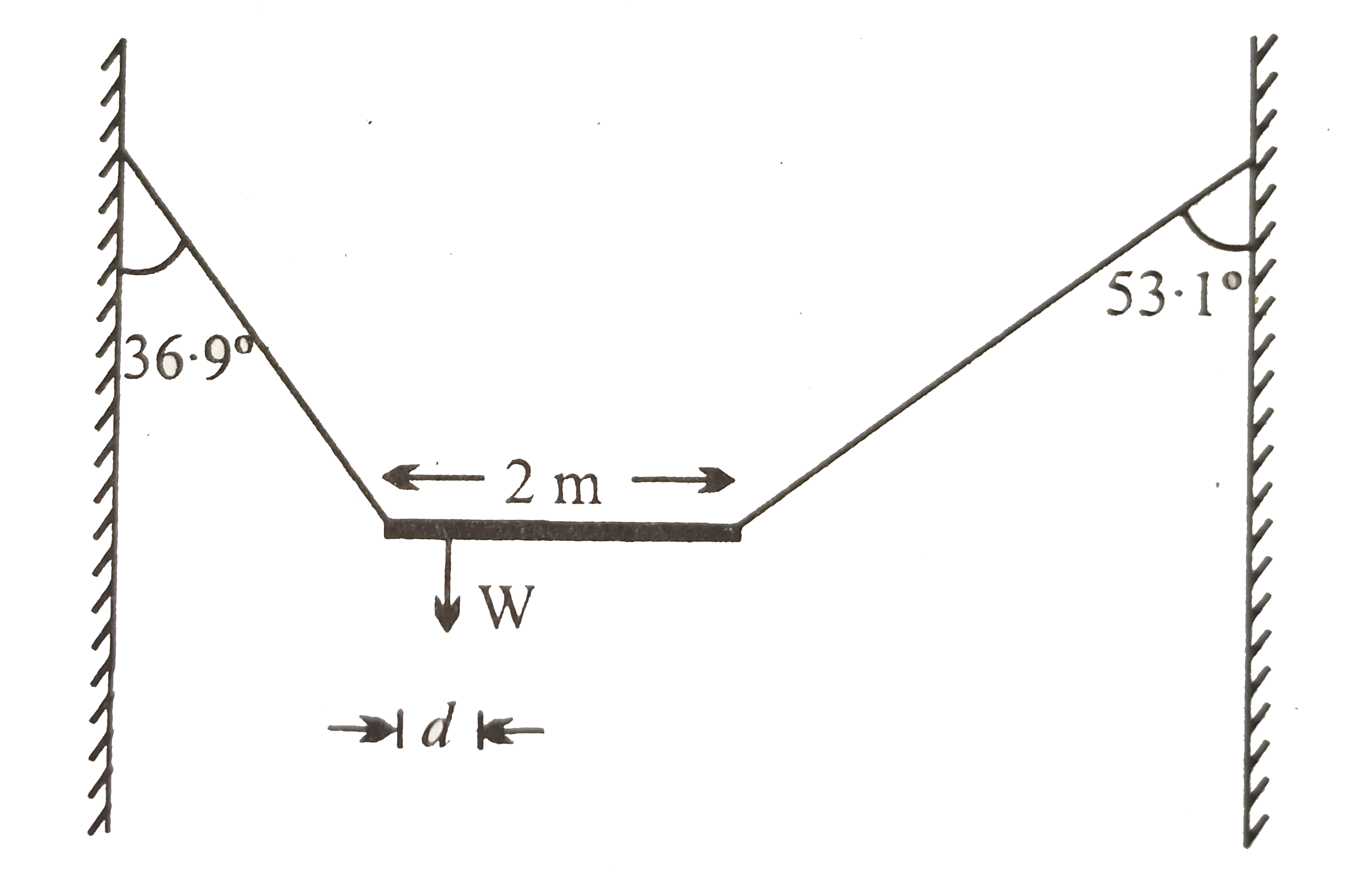
View SolutionA bar of W weight is placed on two parallel sharp points A and B and the bar is horizontal. The distance between the two sharp points is d. The center of gravity of the bar is located at a distance of x from A. The perpendicular reaction to A is.
View SolutionA non-uniform bar of weight W is suspended at rest by two strings of negligible weight as shown in Fig.7.39. The angles made by the strings with the vertical are 36.9^(@) and 53.1° respectively. The bar is 2 m long. Calculate the distance d of the centre of gravity of the bar from its left end.
View SolutionFind the value of x in the following figures.
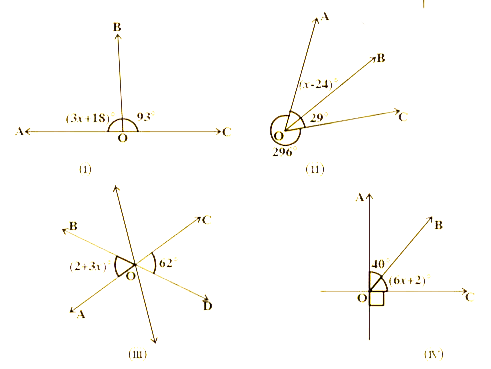
View Solution
